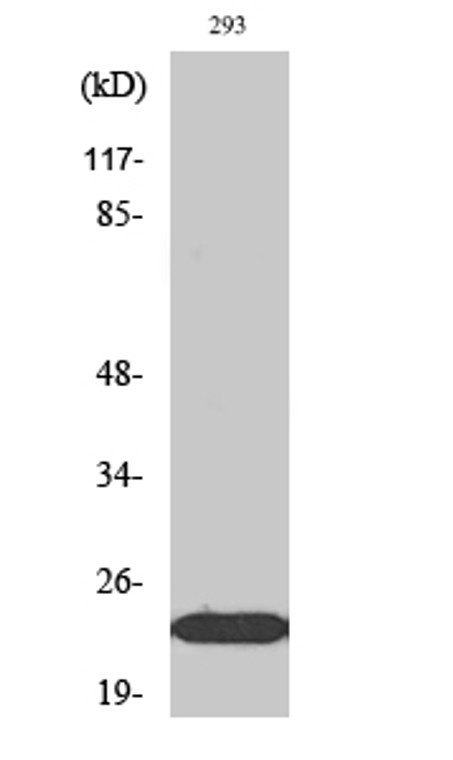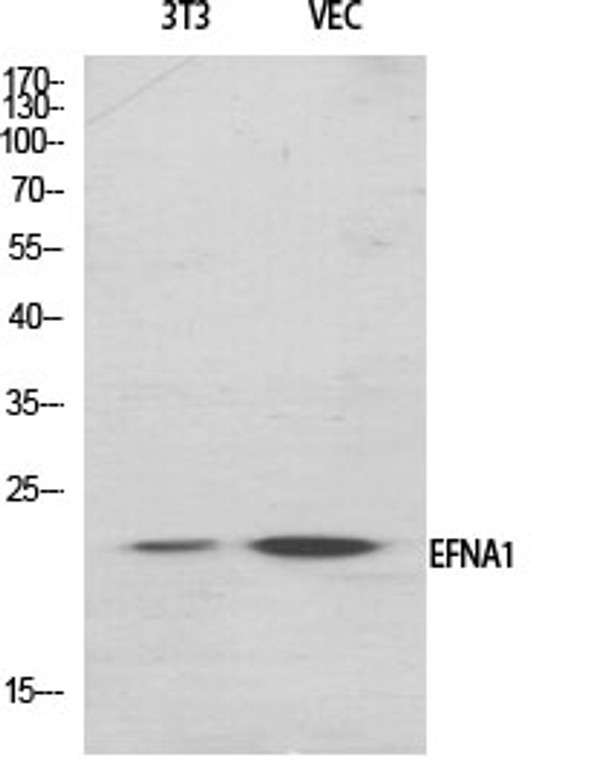| Host: |
Rabbit |
| Applications: |
WB/IHC/IF/ELISA |
| Reactivity: |
Human/Mouse/Rat |
| Note: |
STRICTLY FOR FURTHER SCIENTIFIC RESEARCH USE ONLY (RUO). MUST NOT TO BE USED IN DIAGNOSTIC OR THERAPEUTIC APPLICATIONS. |
| Short Description: |
Rabbit polyclonal antibody anti-Ephrin-A1 (66-115 aa) is suitable for use in Western Blot, Immunohistochemistry, Immunofluorescence and ELISA research applications. |
| Clonality: |
Polyclonal |
| Conjugation: |
Unconjugated |
| Isotype: |
IgG |
| Formulation: |
Liquid in PBS containing 50% Glycerol, 0.5% BSA and 0.02% Sodium Azide. |
| Purification: |
The antibody was affinity-purified from rabbit antiserum by affinity-chromatography using epitope-specific immunogen. |
| Concentration: |
1 mg/mL |
| Dilution Range: |
WB 1:500-1:2000IHC 1:100-1:300IF 1:200-1:1000ELISA 1:10000 |
| Storage Instruction: |
Store at-20°C for up to 1 year from the date of receipt, and avoid repeat freeze-thaw cycles. |
| Gene Symbol: |
EFNA1 |
| Gene ID: |
1942 |
| Uniprot ID: |
EFNA1_HUMAN |
| Immunogen Region: |
66-115 aa |
| Specificity: |
Ephrin-A1 Polyclonal Antibody detects endogenous levels of Ephrin-A1 protein. |
| Immunogen: |
The antiserum was produced against synthesized peptide derived from the human EFNA1 at the amino acid range 66-115 |
| Post Translational Modifications | Undergoes proteolysis by a metalloprotease to give rise to a soluble monomeric form. N-Glycosylation is required for binding to EPHA2 receptor and inducing its internalization. |
| Function | Cell surface GPI-bound ligand for Eph receptors, a family of receptor tyrosine kinases which are crucial for migration, repulsion and adhesion during neuronal, vascular and epithelial development. Binds promiscuously Eph receptors residing on adjacent cells, leading to contact-dependent bidirectional signaling into neighboring cells. Plays an important role in angiogenesis and tumor neovascularization. The recruitment of VAV2, VAV3 and PI3-kinase p85 subunit by phosphorylated EPHA2 is critical for EFNA1-induced RAC1 GTPase activation and vascular endothelial cell migration and assembly. Exerts anti-oncogenic effects in tumor cells through activation and down-regulation of EPHA2. Activates EPHA2 by inducing tyrosine phosphorylation which leads to its internalization and degradation. Acts as a negative regulator in the tumorigenesis of gliomas by down-regulating EPHA2 and FAK. Can evoke collapse of embryonic neuronal growth cone and regulates dendritic spine morphogenesis. |
| Protein Name | Ephrin-A1Eph-Related Receptor Tyrosine Kinase Ligand 1Lerk-1Immediate Early Response Protein B61Tumor Necrosis Factor Alpha-Induced Protein 4Tnf Alpha-Induced Protein 4 Cleaved Into - Ephrin-A1 - Secreted Form |
| Database Links | Reactome: R-HSA-2682334Reactome: R-HSA-3928663Reactome: R-HSA-3928665 |
| Cellular Localisation | Cell MembraneLipid-AnchorGpi-AnchorEphrin-A1Secreted Form: Secreted |
| Alternative Antibody Names | Anti-Ephrin-A1 antibodyAnti-Eph-Related Receptor Tyrosine Kinase Ligand 1 antibodyAnti-Lerk-1 antibodyAnti-Immediate Early Response Protein B61 antibodyAnti-Tumor Necrosis Factor Alpha-Induced Protein 4 antibodyAnti-Tnf Alpha-Induced Protein 4 Cleaved Into - Ephrin-A1 - Secreted Form antibodyAnti-EFNA1 antibodyAnti-EPLG1 antibodyAnti-LERK1 antibodyAnti-TNFAIP4 antibody |
Information sourced from Uniprot.org
12 months for antibodies. 6 months for ELISA Kits. Please see website T&Cs for further guidance










